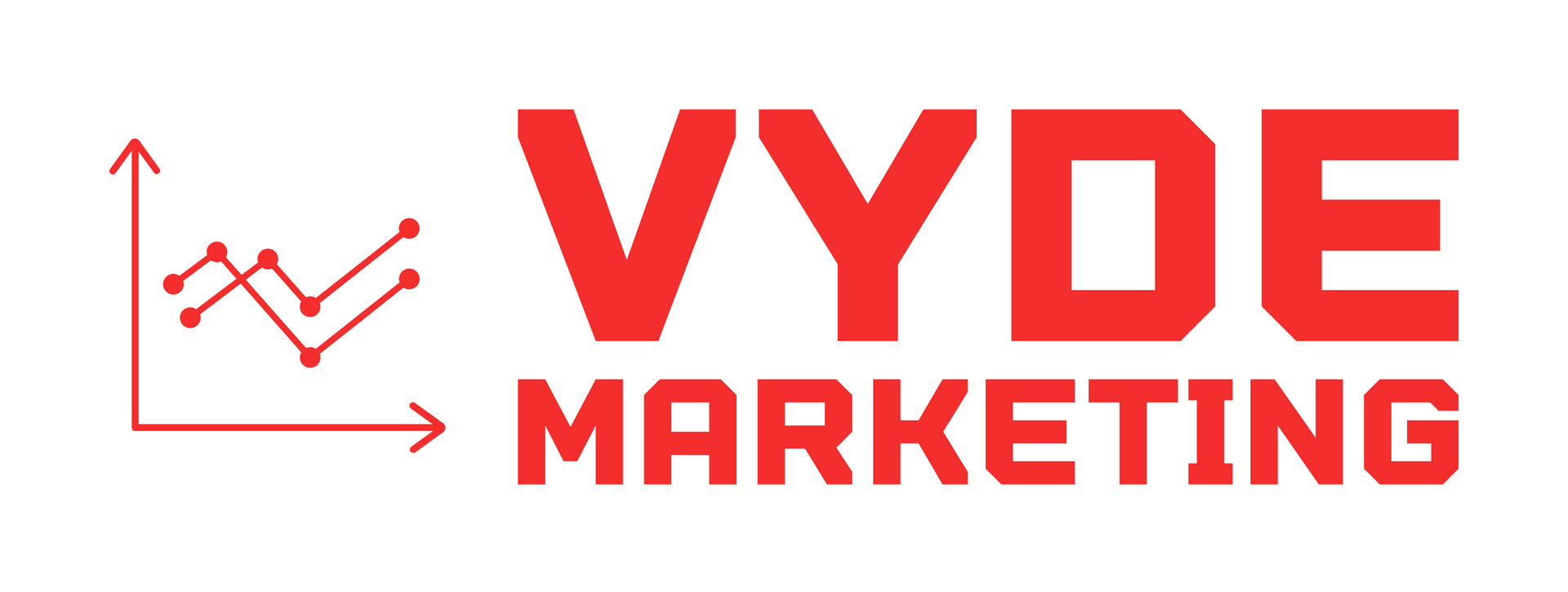B2B Email Marketing
Email Marketing for Your B2B Business
Email remains a cornerstone strategy for building relationships, nurturing leads, and driving conversions. Unlike other marketing channels that can be fleeting or intrusive, email marketing offers a direct line to decision-makers and stakeholders within an organization. This personalized form of communication enables businesses to deliver tailored content that resonates with their audience's specific needs and challenges.
Email marketing in the B2B realm is not just about broadcasting a message; it's about engaging in meaningful dialogues. The goal is to provide value through insightful content, whether it's industry news, case studies, white papers, or thought leadership articles. By doing so, businesses can position themselves as trusted advisors rather than mere vendors.
Moreover, email marketing allows for sophisticated segmentation and automation techniques that ensure the right message reaches the right person at the right time. This level of precision helps foster long-term relationships and keeps potential clients engaged throughout their buying journey.
As we delve deeper into this topic, we'll explore effective strategies for crafting compelling emails, segmenting your audience intelligently, and leveraging data analytics to refine your approach continually. Understanding these foundational elements will empower you to harness the full potential of email marketing in your B2B endeavors.
Benefits Of Email Marketing In The B2B Sector
Email marketing stands as a cornerstone in the B2B sector, offering a myriad of benefits that are both strategic and measurable. One of its most significant advantages is its ability to foster deep, long-term relationships with clients. Unlike other forms of digital communication that can feel transient, email provides a direct line to decision-makers, allowing for personalized and timely interactions. This level of customization helps businesses build trust and credibility over time.
Another key benefit is the cost-effectiveness of email campaigns. Compared to traditional marketing channels like print or broadcast media, email marketing requires relatively low investment while delivering high returns. The scalability of email campaigns means that they can be easily adjusted based on budget constraints without sacrificing outreach effectiveness.
Moreover, email marketing offers unparalleled metrics for tracking performance. Open rates, click-through rates, and conversion metrics provide invaluable insights into customer behavior and campaign effectiveness. This data-driven approach enables businesses to fine-tune their strategies in real-time, ensuring optimal engagement and ROI.
Finally, email marketing seamlessly integrates with other digital strategies such as content marketing and social media campaigns. By creating cohesive messaging across multiple platforms, businesses can amplify their reach and reinforce brand consistency—a crucial factor in maintaining a competitive edge in the B2B landscape.
Building A Targeted Email List
Building a targeted email list is the cornerstone of any successful B2B email marketing campaign. Unlike B2C, where broad appeal can sometimes yield results, B2B marketing demands precision and relevance. The first step in this process is identifying your ideal client profile (ICP). This involves understanding not just the industry and company size, but also the specific roles within these organizations that are most likely to benefit from your product or service.
Once you have a clear picture of your ICP, leverage multiple channels to gather email addresses. Networking events, webinars, and industry conferences offer excellent opportunities for direct engagement. Online strategies should not be overlooked; use LinkedIn's advanced search features to connect with potential leads who match your ICP criteria. Offering valuable content like whitepapers or case studies in exchange for contact information on your website can also effectively grow your list.
Segmentation is another critical aspect of building a targeted email list. By categorizing contacts based on factors such as job title, industry verticals, or past interactions with your brand, you can tailor messages to resonate more deeply with each segment. This ensures that when you do send an email, it lands in an inbox where it’s both relevant and welcomed.
Crafting Compelling Email Content
Crafting compelling email content for B2B businesses is both an art and a science, requiring a nuanced understanding of your audience and their specific needs. It's not just about what you say, but how you say it. The goal is to establish trust, demonstrate value, and drive action without coming off as overly promotional.
Begin by focusing on the subject line; it's the first thing recipients see and it must grab their attention. Aim for clarity over cleverness—busy professionals appreciate straightforwardness. For instance, "Boost Your Team's Productivity with Our Latest Software" is more effective than something vague like "Unlock New Potential."
Once your email is opened, immediately address the recipient's pain points. Use concise language to outline how your product or service can solve their problems or enhance their operations. Incorporate data and case studies to provide concrete evidence of your claims.
Personalization is key in B2B email marketing. Tailor your content based on the recipient's industry, role, or past interactions with your brand. This makes them feel valued and understood.
Lastly, include a clear call-to-action that guides them towards the next step—whether it's scheduling a demo, downloading a whitepaper, or simply responding to the email for more information. This strategic approach ensures that every piece of content within your email drives towards achieving tangible business outcomes.
Personalization And Segmentation Strategies
Personalization and segmentation are cornerstones of successful email marketing campaigns, particularly in the B2B landscape where understanding and addressing the unique needs of different businesses can significantly enhance engagement and conversion rates. Effective personalization goes beyond simply inserting a recipient's name into an email; it involves crafting content that speaks directly to the individual recipient’s business challenges, industry trends, and specific pain points.
Segmentation is the process of dividing your email list into distinct groups based on criteria such as industry, company size, job role, purchasing behavior, or stage in the sales funnel. By doing so, you can tailor your messages to resonate more deeply with each segment. For instance, a tech startup might be more interested in innovative solutions and growth strategies while a well-established corporation might prioritize efficiency improvements and cost reductions.
Advanced segmentation techniques also involve leveraging data analytics to track user behavior and interactions with previous emails. This insight allows you to predict future actions and send highly relevant content at optimal times. When done correctly, personalization combined with strategic segmentation can transform generic email blasts into dynamic communication tools that build stronger relationships, foster loyalty, and ultimately drive B2B sales success.
Measuring And Analyzing Email Campaign Performance
Measuring and analyzing the performance of your email marketing campaigns is crucial for B2B businesses aiming to refine their strategies and achieve better results. The first step involves setting clear objectives that align with your overall business goals, such as increasing lead generation, boosting engagement, or driving conversions. Once these objectives are in place, identifying key performance indicators (KPIs) becomes essential.
Common KPIs include open rates, click-through rates (CTR), conversion rates, and unsubscribe rates.
Open rates provide insights into the effectiveness of your subject lines and timing. A low open rate could indicate a need for more compelling subject lines or a different sending schedule. Click-through rates measure how well your email content resonates with recipients; a high CTR suggests that your call-to-action is effective and that the content is relevant to the audience.
Analyzing these metrics over time allows you to identify patterns and trends. For instance, segmenting data by industry or job role can reveal which types of content are most appealing to different segments of your audience. By leveraging A/B testing on elements such as subject lines, images, and calls-to-action, you can continuously optimize your emails for better performance.
Lastly, it’s important to integrate feedback loops by soliciting input from recipients through surveys or direct replies. This not only provides qualitative data but also fosters stronger relationships with your audience by showing that you value their opinions.
Best Practices And Tips For Successful B2B Email Marketing
When it comes to B2B email marketing, the key to success lies in a strategic approach that prioritizes understanding your audience and delivering value. Begin by segmenting your email list based on criteria such as industry, job role, and previous interactions. This allows for more personalized communication that resonates with specific segments of your audience.
Craft compelling subject lines and preview texts that pique curiosity while clearly conveying the benefit of opening the email. Personalization extends beyond just using a recipient's name; tailor content to address their unique challenges and goals. Providing insightful content like case studies, whitepapers, or industry reports can establish your authority and build trust.
Timing is also critical in B2B email marketing. Avoid sending emails during peak busy hours or holidays when professionals are less likely to engage. Instead, analyze past campaign data to determine optimal send times for your audience.
Additionally, ensure your emails are mobile-friendly since decision-makers often check their emails on the go. Clear call-to-actions (CTAs) should guide recipients towards desired actions without overwhelming them with too many options.
Finally, continuously test and optimize your campaigns by analyzing performance metrics such as open rates, click-through rates, and conversions. By iterating based on these insights, you can refine your strategy for better results over time.






Vyde Marketing
Leading the way in Houston, TX with tailor-made Digital Marketing strategies for your Businesses.





